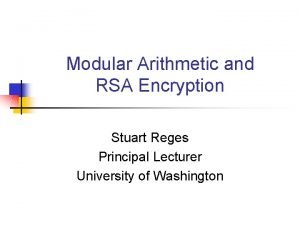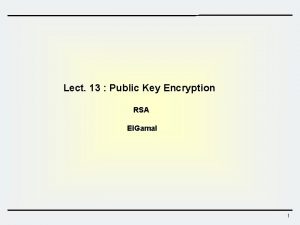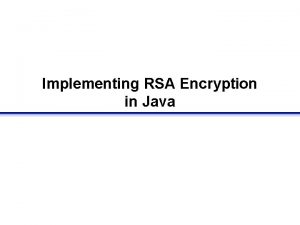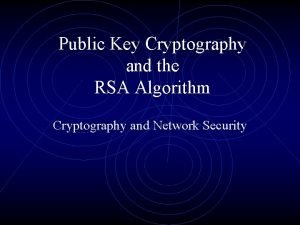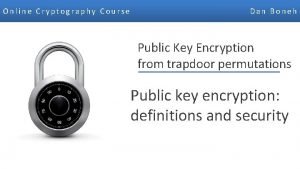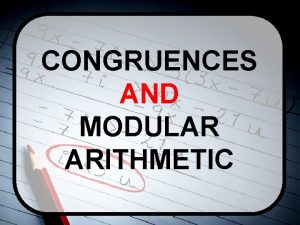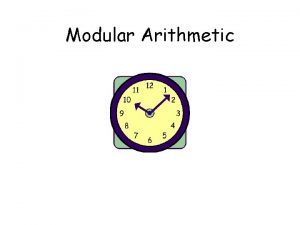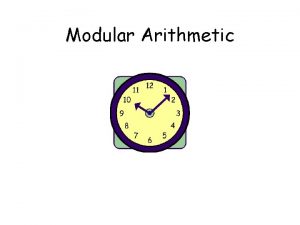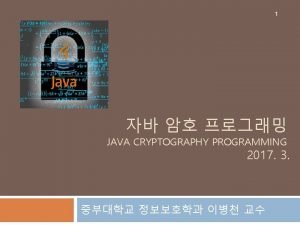Modular Arithmetic and RSA Encryption Stuart Reges Principal






- Slides: 6

Modular Arithmetic and RSA Encryption Stuart Reges Principal Lecturer University of Washington

Some basic terminology n n n Alice wants to send a secret message to Bob Eve is eavesdropping Cryptographers tell Alice and Bob how to encode their messages Cryptanalysts help Eve to break the code Historic battle between the cryptographers and the cryptanalysts that continues today

Public Key Encryption n n Proposed by Diffie, Hellman, Merkle First big idea: use a function that cannot be reversed (a humpty dumpty function): Bob tells Alice a function to apply using a public key, and Eve can’t compute the inverse Second big idea: use asymmetric keys (sender and receiver use different keys): Bob has a private key to compute the inverse Primary benefit: doesn't require the sharing of a secret key

RSA Encryption n n Named for Ron Rivest, Adi Shamir, and Leonard Adleman Invented in 1977, still the premier approach Based on Fermat's Little Theorem: ap-1 1 (mod p) for prime p, gcd(a, p) = 1 Slight variation: a(p-1)(q-1) 1 (mod pq) for distinct primes p and q, gcd(a, pq) = 1 Requires large primes (100+ digit primes)

Example of RSA n n Pick two primes p and q, compute n = p q Pick two numbers e and d, such that: e d = (p-1)(q-1)k + 1 (for some k) Publish n and e (public key), encode with: (original message)e mod n Keep d, p and q secret (private key), decode with: (encoded message)d mod n

Why does it work? n n Original message is carried to the e power, then to the d power: d (msge)d = msge� Remember how we picked e and d: msged = msg(p-1)(q-1)k + 1 Apply some simple algebra: msged = (msg(p-1)(q-1))k msg 1 Applying Fermat's Little Theorem: msged = (1)k msg 1 = msg
